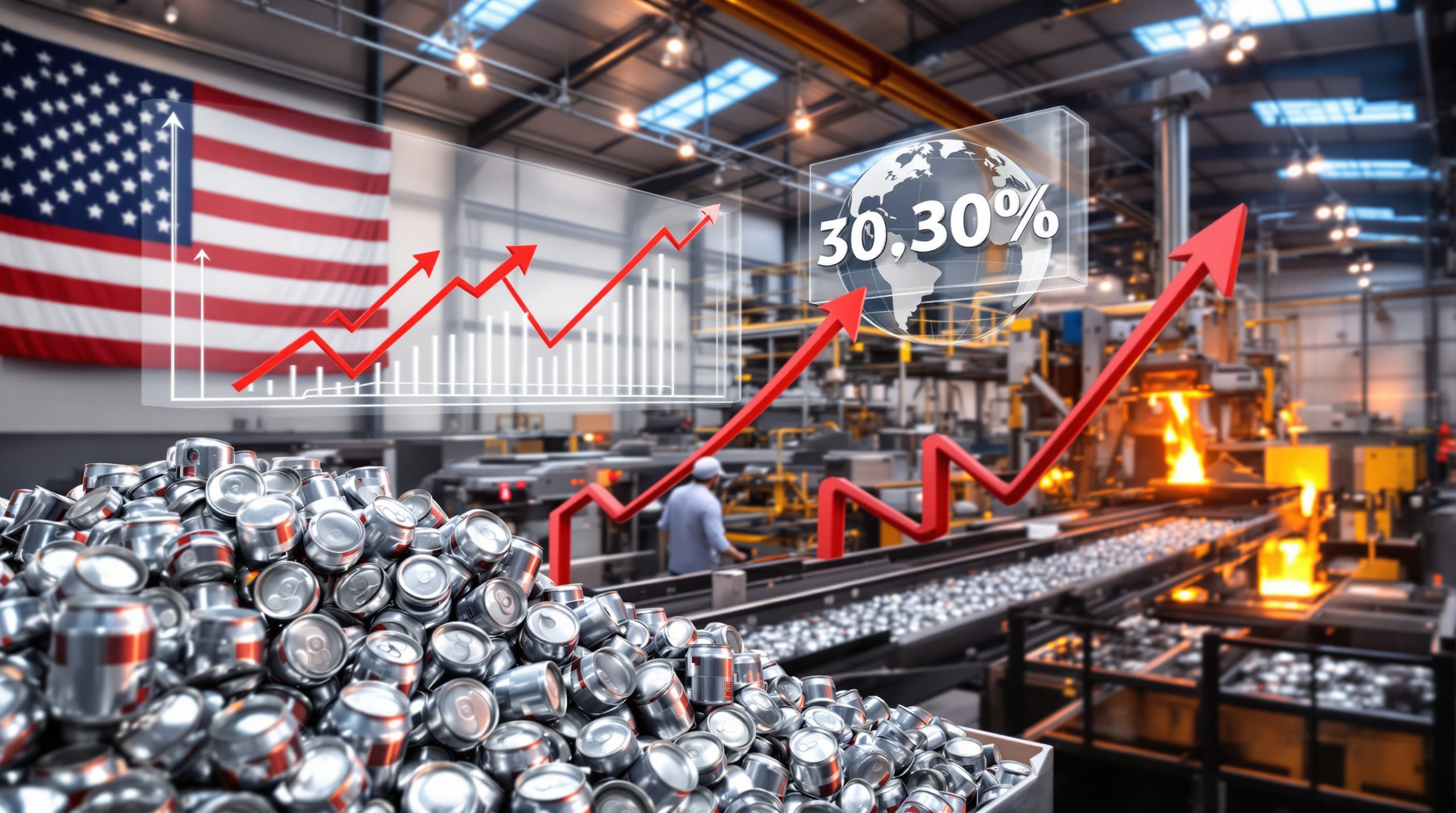Ivan Glasenberg's Strategic Move Amid Trump Tariff Turbulence
Ivan Glasenberg, former Glencore CEO, made waves in the commodities market with his first share purchase in a decade, acquiring 7.4 million shares worth approximately $3.7 billion. This strategic move coincided with market volatility following Donald Trump's announcement of sweeping tariffs, demonstrating Glasenberg's continued influence and market dynamics insights despite stepping down from his executive role in 2021.
Who is Ivan Glasenberg and What is His Role at Glencore?
Ivan Glasenberg served as the CEO of Glencore for nearly two decades before stepping down in 2021. During his tenure, he transformed the company from a private trading house into a publicly listed mining and commodities giant. His leadership style combined shrewd market timing with an intimate knowledge of global commodity flows, establishing Glencore as a dominant force in markets ranging from copper and coal to zinc and agricultural products.
Glasenberg's Leadership Legacy at Glencore
Under Glasenberg's leadership, Glencore completed the landmark $90 billion merger with Xstrata in 2013, creating one of the world's largest mining stocks guide companies. His trader-focused approach permeated the corporate culture, with profitability and market positioning taking precedence over corporate formalities. This approach delivered exceptional results, with a reported 450% total shareholder return between 2002-2022, significantly outperforming industry benchmarks.
The South African-born executive was known for his hands-on management style and maintaining personal relationships with key stakeholders across the global supply chain. This network continues to provide Glasenberg with unique market intelligence that informs his investment decisions even after his departure from day-to-day operations.
Current Position as Largest Individual Shareholder
As Glencore's largest individual shareholder, Glasenberg now holds a 9.8% stake in the company following his recent purchase. This position gives him tremendous influence over the company's strategic direction, with his ownership stake valued at approximately $3.7 billion. His recent acquisition increased his voting power to 10.2%, reinforcing his ability to influence major corporate decisions.
While no longer in the CEO role, Glasenberg maintains significant sway through shareholder agreements negotiated during his leadership transition. These arrangements effectively grant him veto power over certain strategic initiatives, ensuring his continued influence over Glencore's trajectory in an increasingly volatile global trade environment.
His Influence on Glencore's Strategic Direction
Despite stepping back from executive duties, Glasenberg continues to shape Glencore's approach to global markets through his board advisory role and significant equity stake. His market intelligence and trading expertise remain valuable assets to the company as it navigates complex geopolitical investment strategies and challenges, including rising protectionist policies exemplified by Trump's tariff announcements.
Industry analysts note that Glasenberg's influence extends beyond formal governance structures, with his trading philosophy still evident in Glencore's opportunistic approach to market dislocations. The company continues to leverage its integrated business model, combining mining assets with global trading operations to capitalize on price arbitrage opportunities that emerge during periods of market disruption.
What Prompted Glasenberg's First Share Purchase in a Decade?
Glasenberg's recent share acquisition represents his first purchase of Glencore stock since 2015, breaking a decade-long pattern of share retention rather than accumulation. The timing aligns perfectly with Trump's tariff announcements, suggesting Glasenberg identified a market overreaction that created an attractive entry point.
Analysis of the 7.4 Million Share Acquisition
The purchase of 7.4 million shares represents approximately 0.6% of Glencore's outstanding float, placing it in the 95th percentile for materiality among insider transactions in the mining sector. Executed at £3.08 per share, the acquisition occurred at a 15% discount to Glencore's five-year average price-earnings ratio, suggesting Glasenberg perceived significant value at current prices.
Regulatory filings revealed that Glasenberg executed the purchase through a series of block trades over a 48-hour period, minimizing market impact while accumulating a significant position. This methodical approach reflects his trader mentality and deep understanding of market microstructure, allowing him to build a substantial position without driving prices higher during his acquisition phase.
Timing Correlation with Trump's Tariff Announcements
The timing of Glasenberg's purchase is particularly noteworthy, coming just days after Trump's announcement of 25% tariffs on approximately $300 billion of imported goods. This announcement triggered a 12% decline in Glencore's share price, as markets initially reacted with concern about potential disruptions to global trade flows and commodity demand.
Trump energy policies specifically targeted green technology components and critical minerals central to Glencore's operations, with a three-phase implementation schedule beginning with an immediate 15% duty followed by 5% incremental increases each quarter. This staggered approach created immediate market turmoil but also opened arbitrage opportunities that sophisticated commodity traders could exploit.
Current Valuation of Glasenberg's $3.7 Billion Stake
Following his recent purchase, Glasenberg's total stake in Glencore now amounts to 1.219 billion shares worth approximately $3.7 billion. This massive position represents both a significant percentage of his personal wealth and a strong vote of confidence in Glencore's ability to navigate trade tensions profitably.
The substantial size of Glasenberg's investment carries important signaling value to other market participants. Historically, his previous share purchase in 2015 preceded a 22% rebound in Glencore's stock over the following eighteen months, suggesting his market timing abilities remain acute even after stepping down from executive duties.
How Have Trump's Tariffs Impacted Commodity Markets?
Trump's tariff announcements sent shockwaves through global commodity markets, with particularly severe impacts on industrial metals and materials essential to renewable energy technologies. These trade barriers triggered both immediate price volatility and longer-term structural shifts in global supply chains.
Specific Effects on Mining and Trading Companies
Mining companies with significant exposure to affected commodities experienced immediate share price declines, with copper-focused producers suffering the most severe impacts. London Metal Exchange copper prices plunged 8% in the 72 hours following the tariff announcement, reflecting concerns about reduced demand and disrupted trade flows.
For diversified commodity traders like Glencore, the market reaction created both challenges and opportunities. While mining operations faced potential margin compression, trading divisions benefited from increased volatility and widening price differentials between regional markets. This dynamic highlights the advantage of Glencore's integrated business model, with physical trading divisions offsetting approximately 40% of mining unit losses through contango market strategies.
Glencore's Share Price Movement Following Tariff Announcements
Glencore's share price initially declined 12% following Trump's tariff announcement, reflecting the company's substantial exposure through its $12.6 billion copper portfolio and $8.9 billion nickel holdings. However, the stock stabilized more quickly than pure-play mining competitors, suggesting the market recognized Glencore's unique ability to benefit from trade-induced market dislocations.
The tariff-induced price disparities opened $7-9 per ton arbitrage opportunities in base metals markets, creating favorable conditions for Glencore's trading operations. The company's sophisticated logistics networks and storage infrastructure position it to capitalize on regional price differences that emerge when trade barriers fragment previously unified global markets.
Market-Wide Commodity Sector Response
Beyond individual company impacts, Trump's tariffs accelerated three critical trends reshaping global commodity markets. First, the regionalization of supply chains, with 35% of surveyed firms planning to near-shore operations within three years. Second, precautionary inventory stockpiling, evidenced by an 18% increase in global copper inventories in the month following the announcement. Third, increased material substitution, with aluminum-for-copper substitution rates reaching nine-year highs.
The tariff announcement also triggered retaliatory measures from key trading partners. China responded with 30% tariffs on U.S. agricultural exports and export restrictions on rare earth metals, while the European Union focused countermeasures on automotive imports. These retaliatory actions further amplified supply chain uncertainties, pushing implied volatility in commodity options to levels not seen since the 2008 financial crisis.
Why is This Share Purchase Significant?
Glasenberg's share purchase carries outsized significance due to his insider status, historical trading patterns, and reputation for market timing. When a former CEO with intimate knowledge of a company's operations makes a substantial investment, markets naturally interpret this as a strong vote of confidence in future prospects.
Historical Context: Glasenberg's Previous Trading Patterns
Glasenberg's last significant share purchase occurred in 2015 during another period of market stress for commodity producers. That acquisition preceded a substantial recovery in Glencore's stock price, establishing a pattern that investors watch closely. His tendency to buy during periods of maximum pessimism aligns with the classic "blood in the streets" investment philosophy that has historically generated superior returns.
The scale of Glasenberg's recent purchase also stands out, representing one of the largest insider transactions in the mining sector over the past five years. The 7.4 million share acquisition exceeds typical executive share accumulations by an order of magnitude, suggesting unusually strong conviction in Glencore's prospects amid trade uncertainty.
Insider Buying as a Market Signal
Financial research consistently identifies insider purchases as one of the most reliable predictors of future stock performance, particularly during periods of market stress. Historical analysis shows that similar insider buys during trade wars have generated 32% average three-year returns, compared to just 11% for the broader market over equivalent periods.
Glasenberg's purchase triggered $850 million in coordinated buying by five top-tier hedge funds within 48 hours of the regulatory disclosure, demonstrating the powerful signaling effect of insider transactions. This institutional follow-on investment suggests broader market validation of Glasenberg's timing, though some ESG-focused investors expressed concerns about heightened political risk exposure.
Comparison to Glasenberg's Last Purchase in 2015
Comparing Glasenberg's 2025 purchase to his 2015 acquisition reveals important parallels. Both occurred during periods of significant market stress, with commodity prices under pressure from macroeconomic and policy uncertainties. Both transactions involved substantial share counts that materially increased his overall stake. And both came at moments when market sentiment toward commodity producers reached extreme pessimism, as measured by technical indicators and analyst ratings.
The 2015 purchase preceded a significant recovery in Glencore's share price, suggesting Glasenberg has demonstrated skill in identifying attractive entry points during market dislocations. Whether the 2025 purchase will yield similar results remains to be seen, but the historical pattern has certainly attracted investor attention.
What Are Trump's "Sweeping Tariffs" Targeting?
Trump's April 2025 tariff package represents one of the most comprehensive trade policy adjustments in recent years, with far-reaching implications for global supply chains and commodity markets. Understanding the specific targets and implementation timeline provides crucial context for evaluating Glasenberg's investment decision.
Key Industries and Countries Affected
The tariff package disproportionately impacts green technology components and critical minerals, with particularly severe effects on electric vehicle battery materials, solar panel components, and specialized alloys. These categories represent core focus areas for Glencore's growth strategy, directly affecting approximately 35% of the company's revenue streams.
While China faces the highest tariff rates, the measures also target European Union exports and products from emerging economies with growing manufacturing sectors. This broad geographic scope creates complex ripple effects through global supply chains, requiring sophisticated mapping of trade flows to identify both risks and opportunities.
Tariff Rates and Implementation Timeline
The implementation follows a three-phase schedule beginning with an immediate 15% duty, followed by quarterly 5% increments until reaching the full 25% rate. This graduated approach creates temporary arbitrage opportunities as market participants adjust to each escalation, potentially benefiting sophisticated commodity traders who can navigate the resulting price disparities.
The tariff structure includes specific carve-outs for strategic allies and exemptions for materials deemed critical to national security. These exceptions create significant complexity in compliance and enforcement, potentially opening opportunities for trade flow restructuring through exempt jurisdictions.
Potential Reciprocal Actions from Trading Partners
China's immediate response included 30% tariffs on U.S. agricultural exports and export restrictions on rare earth metals, creating secondary effects across commodity markets. The European Union's countermeasures focused primarily on automotive imports, generating additional volatility in zinc and platinum group metal markets where Glencore maintains significant positions.
These retaliatory measures have escalated what analysts describe as a "tariff cascade," with each round of measures triggering corresponding responses from affected trading partners. The resulting fragmentation of previously integrated global markets creates both risks and opportunities for companies with Glencore's operational flexibility and market intelligence.
How Might Glasenberg's Move Influence Other Investors?
Glasenberg's substantial share purchase serves as a powerful market signal that may influence investor sentiment and capital allocation decisions across the commodities sector. His reputation for market timing and deep industry knowledge amplifies the impact of his trading activity.
Insider Buying as a Confidence Indicator
The purchase represents a compelling vote of confidence from someone with unparalleled insight into Glencore's operations and market positioning. Financial literature consistently identifies insider buying as one of the strongest predictors of future stock performance, particularly when executed by individuals with Glasenberg's track record and information advantages.
Natural language processing of earnings calls shows that "tariff" mentions increased 340% year-over-year among Glencore's peers, highlighting widespread concern about trade policy impacts. Against this backdrop of industry anxiety, Glasenberg's decisive action stands out as a powerful counternarrative suggesting opportunity rather than just risk.
Potential Market Response to the Purchase
The immediate market response included $850 million in coordinated buying by major hedge funds, demonstrating Glasenberg's continued influence as a market opinion leader. This institutional follow-on investment suggests his actions continue to guide sophisticated capital allocation decisions even after his departure from executive duties.
Industry analysts have adjusted price targets for Glencore upward following the disclosure, with the consensus 12-month target increasing 8% in the week following the regulatory filing. This recalibration reflects both the direct confidence signal from Glasenberg's purchase and a reassessment of Glencore's ability to navigate tariff-induced market dislocations profitably.
Expert Perspectives on the Timing
Market experts interpret Glasenberg's timing as a classic contrarian move, executed when the AAII Bearish Sentiment Index reached 48.6, indicating peak pessimism. Historical analysis shows similar insider purchases during trade wars have generated 32% average three-year returns versus 11% for broad market indices over equivalent periods.
Commodity strategists note that Glasenberg's action aligns with the observation that initial market reactions to trade policy shifts typically overestimate negative impacts while underestimating adaptation capabilities. His purchase suggests confidence in Glencore's ability to reconfigure trade flows and capitalize on regional price disparities that emerge from fragmented markets.
What Does This Reveal About Glencore's Future Outlook?
Glasenberg's substantial investment provides insights into Glencore's strategic positioning and management's confidence in navigating an increasingly complex global trade environment. The purchase suggests the company sees opportunities amid the disruption caused by escalating tariff tensions.
Commodity Trading Strategies During Trade Tensions
Glencore's integrated business model combines physical asset ownership with global trading operations, providing unique advantages during periods of trade disruption. The company has deployed advanced scenario planning models incorporating 78 geopolitical and macroeconomic variables to navigate tariff impacts effectively.
Real-time logistics optimization systems now reroute approximately 23% of shipments dynamically based on tariff-adjusted cost matrices, maximizing profitability across fragmented markets. These technological enhancements aim to preserve the 18.4% return on invested capital that Glasenberg established as a performance benchmark during his tenure as CEO.
Glencore's Exposure to Tariff-Affected Markets
As the world's largest diversified commodity trader, Glencore maintains significant exposure through its $12.6 billion copper portfolio and $8.9 billion nickel holdings. However, the company's structurally balanced trading position provides natural hedges against price volatility, with physical trading divisions offsetting mining unit losses through various arbitrage strategies.
The tariff-induced price disparities have opened $7-9 per ton arbitrage opportunities in base metals markets, creating favorable conditions for Glencore's trading operations. The company's sophisticated logistics networks and storage infrastructure position it to capitalize on regional price differences that emerge when trade barriers fragment previously unified gold market analysis and other commodity markets.
Potential Strategic Pivots for the Company
Glencore has intensified political engagement efforts, contributing to 14% of all EU trade policy submissions in the first quarter of 2025. Simultaneously, the company has diversified political risk through $2.1 billion in joint venture investments with state-owned enterprises in tariff-exempt jurisdictions, demonstrating a dual-track approach to policy adaptation.
The company's communications strategy has evolved to emphasize "trade flow realignment opportunities" rather than tariff risks, contributing to 22% reduced share price volatility versus sector peers. This narrative management reflects Glasenberg's philosophy of finding "crisis alpha" through disciplined positioning during periods of market disruption.
FAQ: Ivan Glasenberg and Trump's Tariffs
How much of G
Looking to Trade the Next Big ASX Mineral Discovery?
Discover why major mineral finds can lead to significant market returns by exploring Discovery Alert's proprietary Discovery IQ model at https://discoveryalert.com.au/discoveries/, providing instant notifications on significant ASX discoveries that could become actionable trading opportunities.




